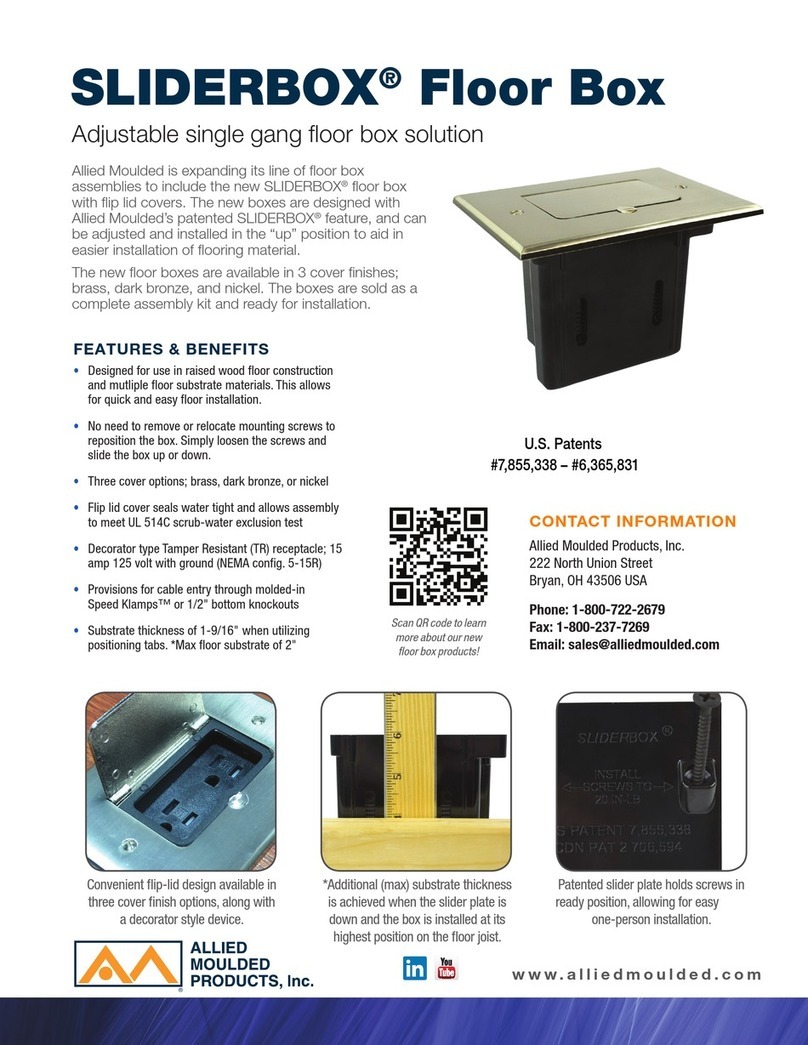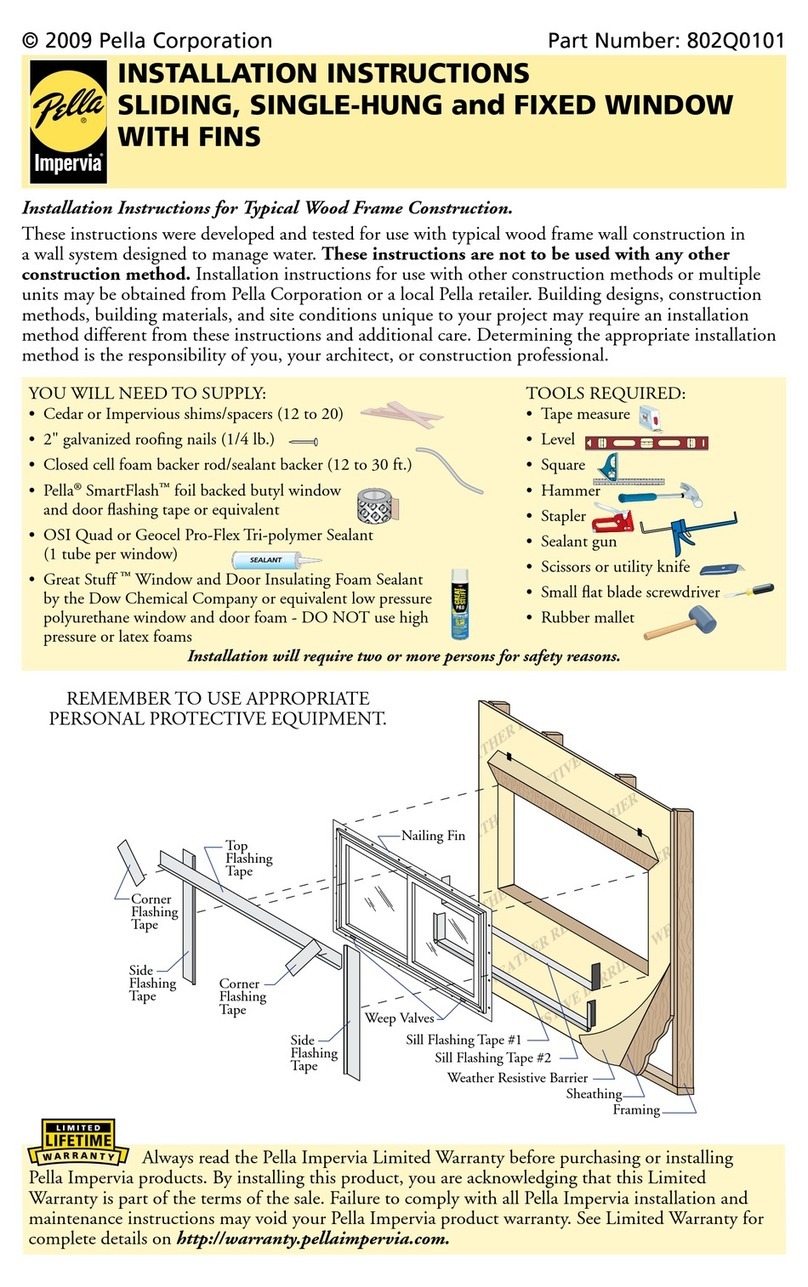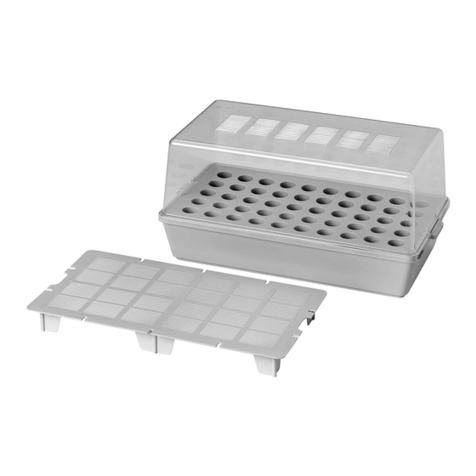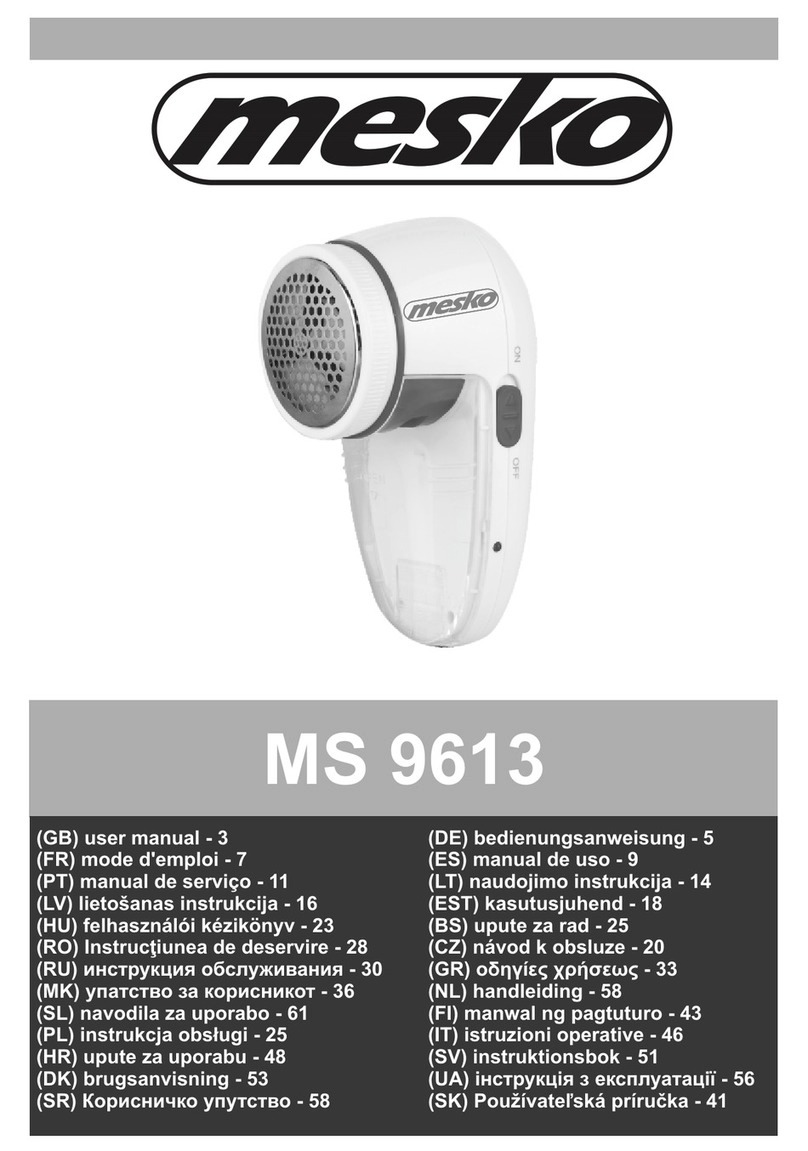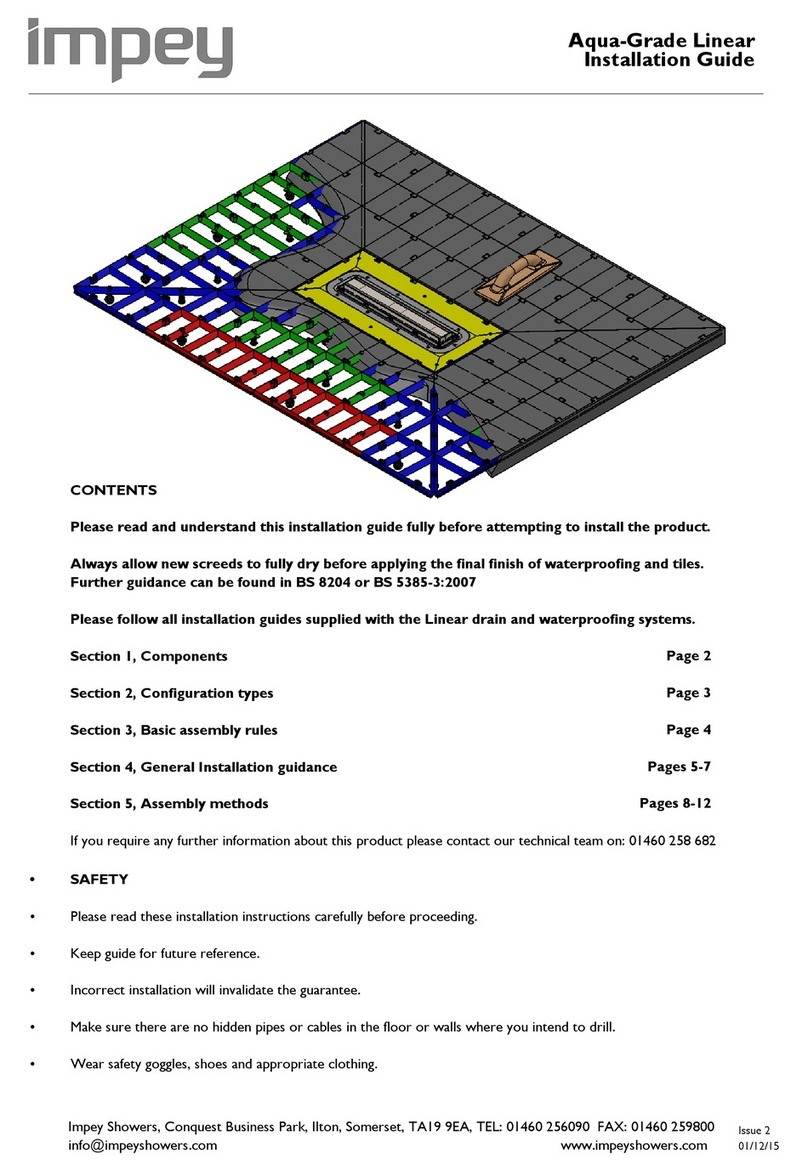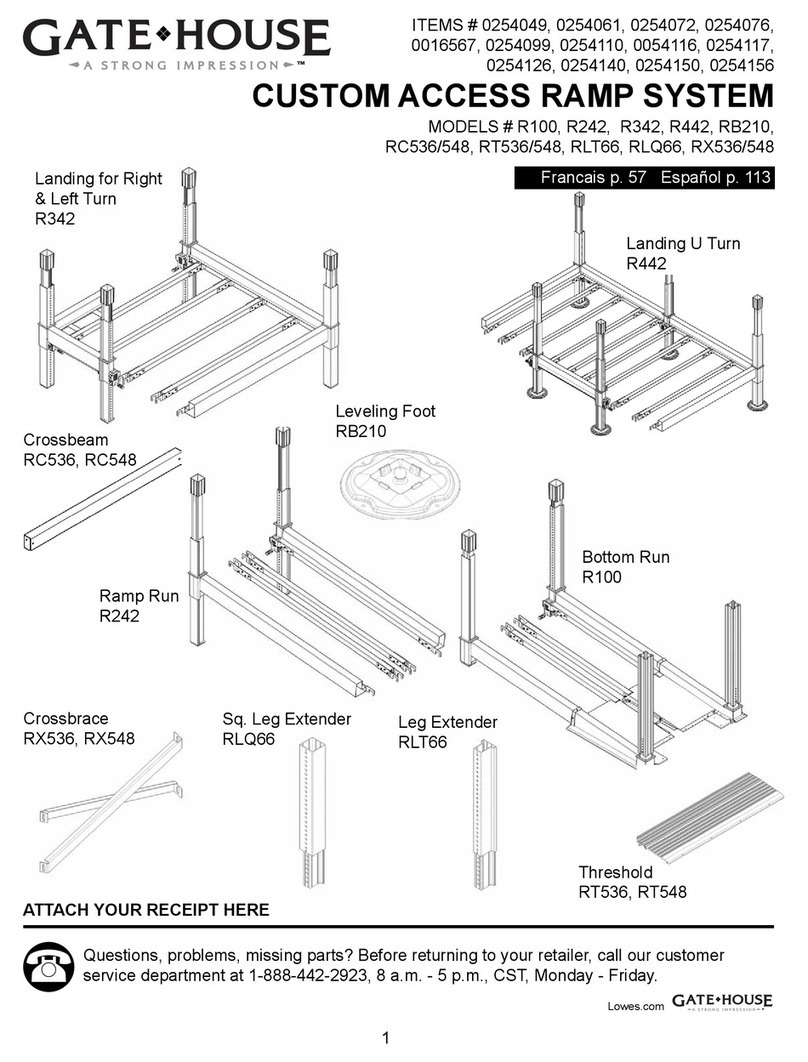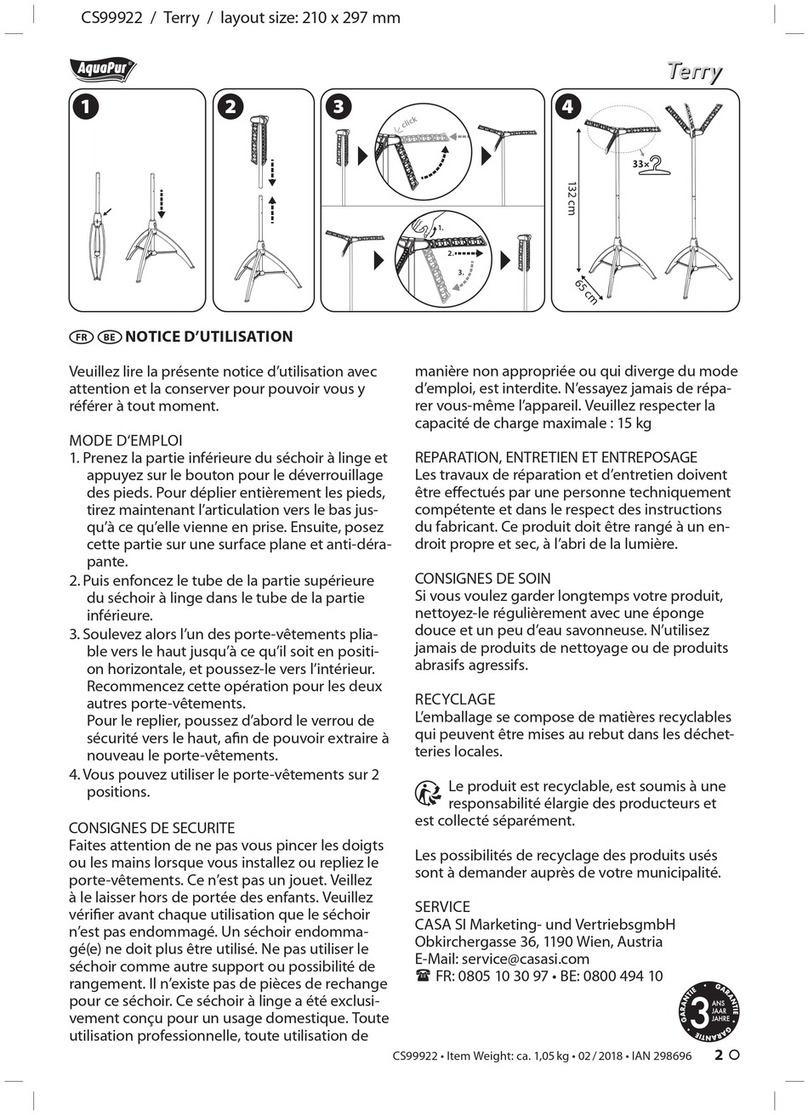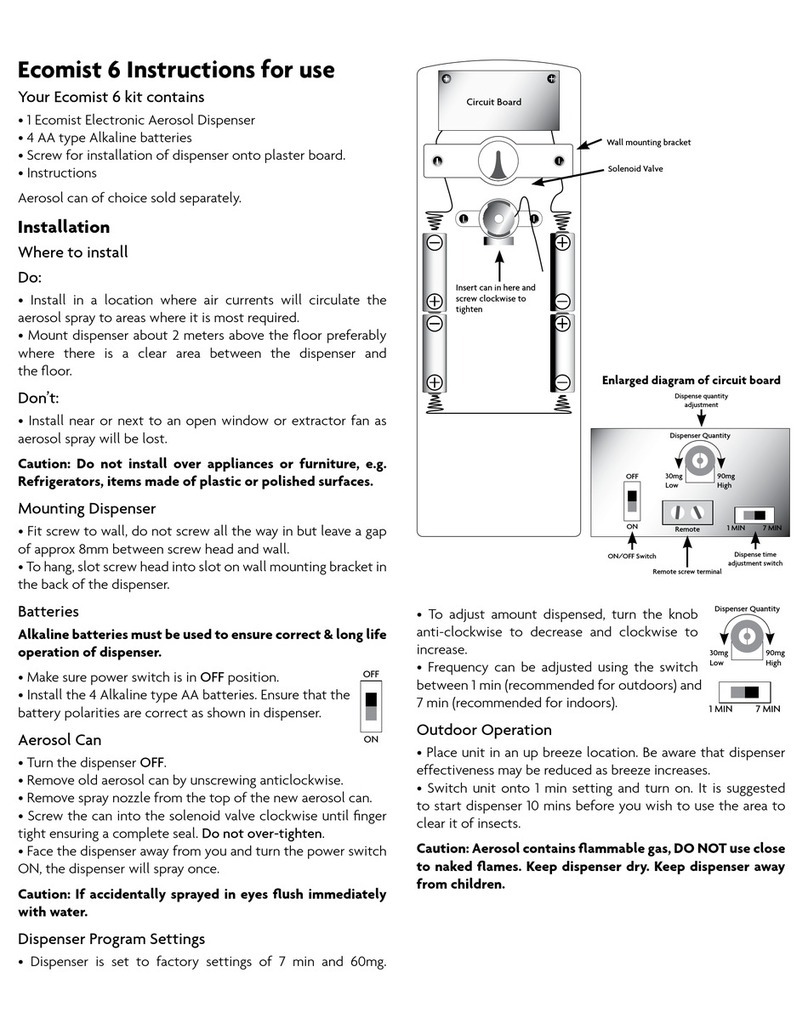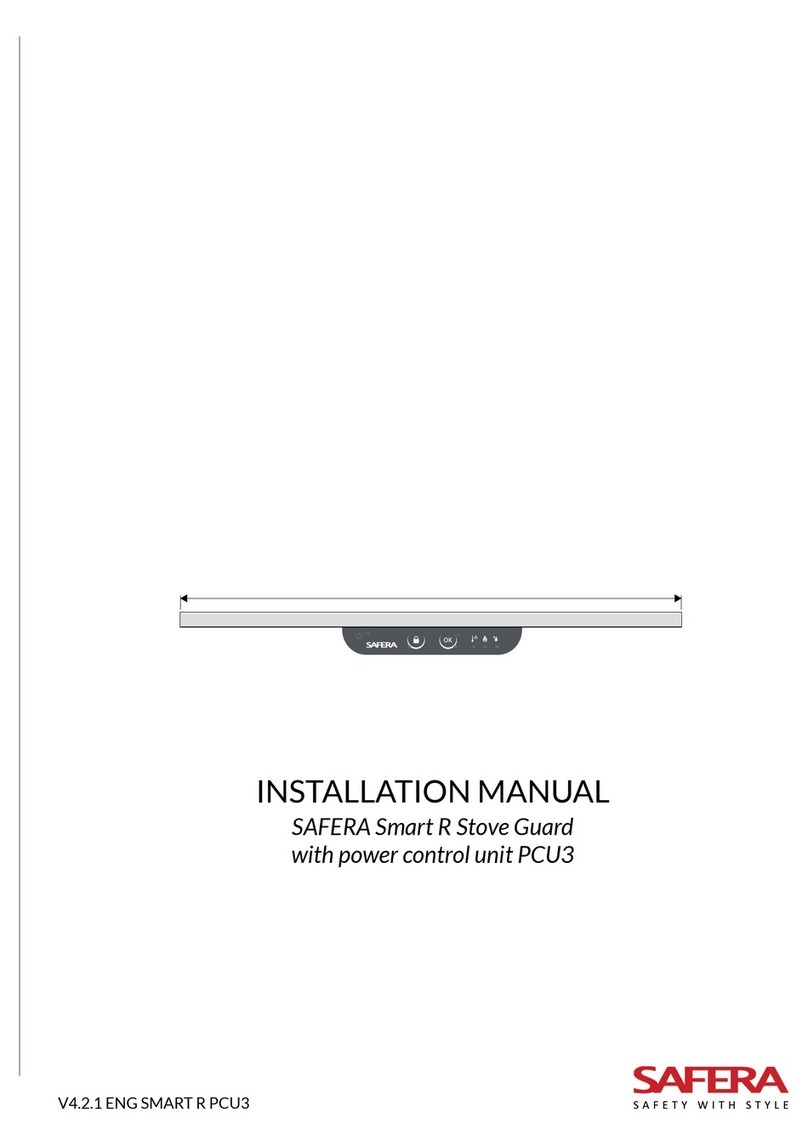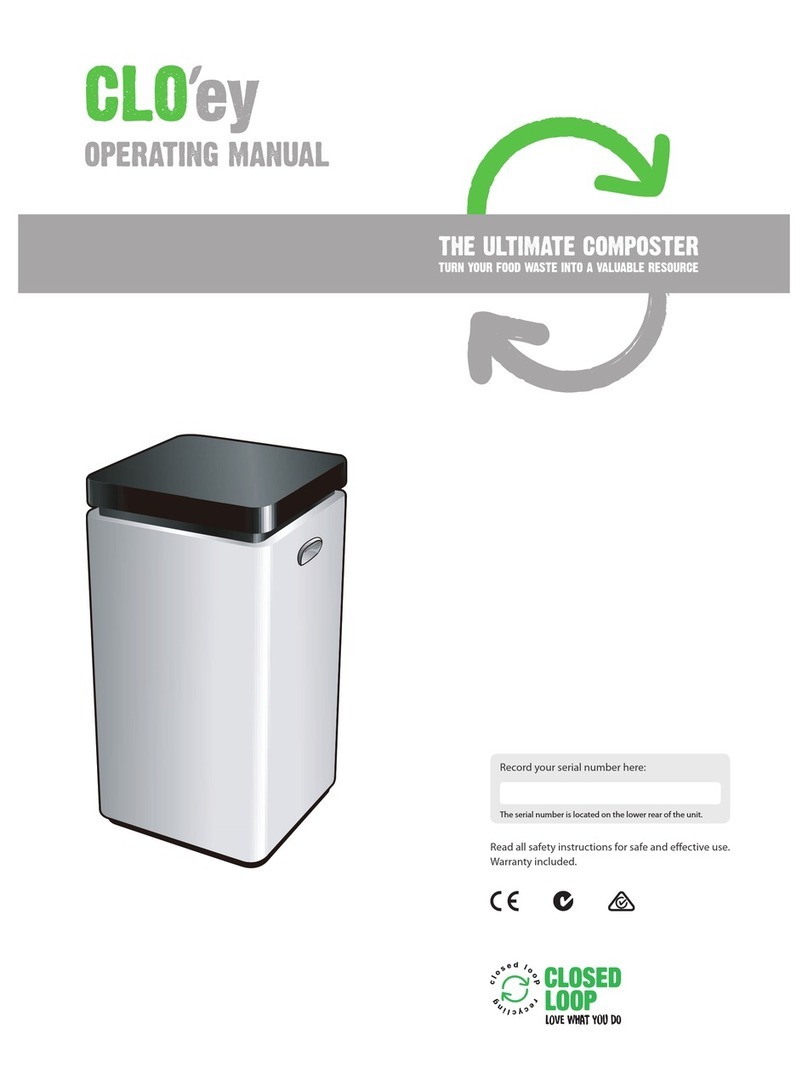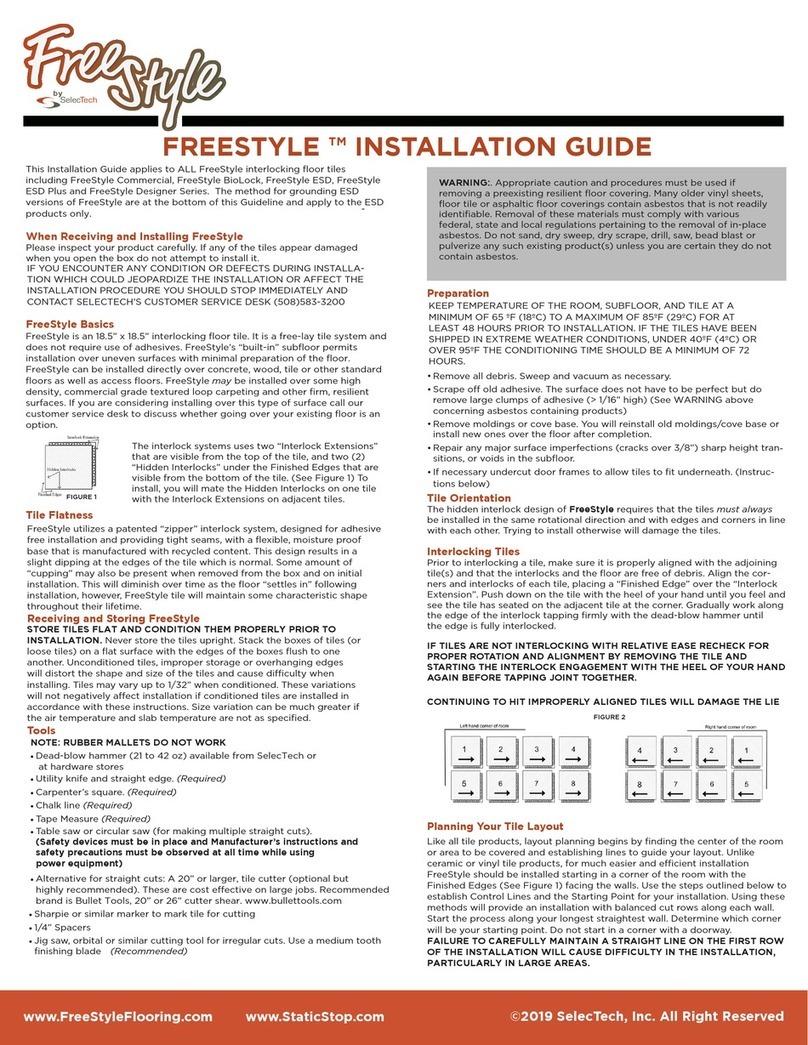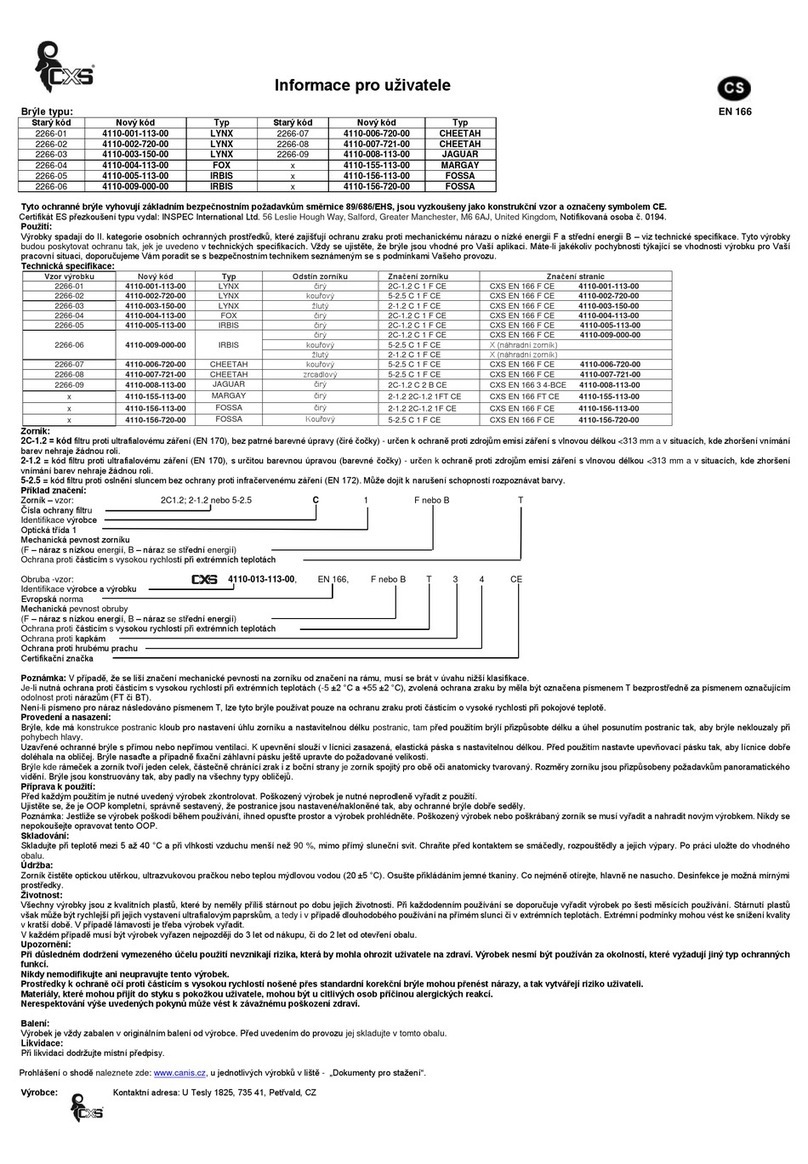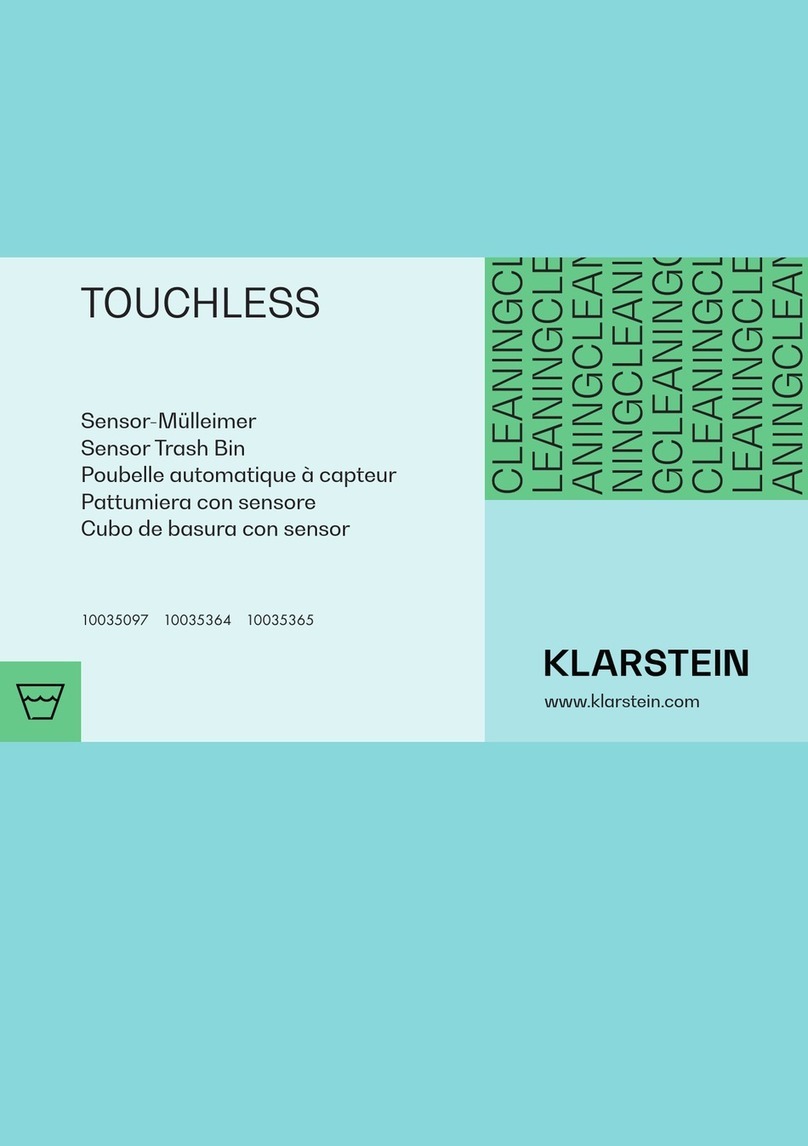primatech P250F User manual

P250F
PNEUMATIC FLOORING TOOL
OPERATING INSTRUCTIONS
WARNING
Read these instructions thoroughly before using this tool and keep it
handy for reference.
Printed in Canada v143, 04/17

PRIMATECH PNEUMATIC TOOL P250F
The pneumatic flooring tool P250F is a professional precision
tool specially developed for the installation standard 3/4" solid
hardwood flooring. It has been designed for easy maintenance
where major components can be accessed within seconds
without the need of any tool. Weighting only 10.3 pounds
(4.7 kg), this ergonomically designed tool makes the
installation of hardwood floor very easy, allowing the operator
to set and fasten the boards in the standing position. It is
offered in 3 different configurations:
• standard L-type 16GA nails in lengths of 1½" (38 mm), 1¾"
(45 mm) or 2" (50 mm)
• T-type 16GA nails in length of 1½" (38 mm) or 2" (50 mm)
• ½" crown 15½GA staples in lengths of 1½" (38 mm), 1¾"
(45 mm) or 2" (50 mm)
The P250F is built around the
Primpact valve engine, a
breakthrough technology for
pneumatic tools. Primpact main
features are:
• short nose and compact valve design with an all-
around striking surface
• high-speed action and few moving parts, for a
powerful yet soft stroke and increased precision.
• reciprocal striking system that regulates the depth of
penetration independently from the mallet impact
• finely threaded screw-in module assembly
For best result, only PRIMATECH fasteners should be used.
Read carefully these instructions before operating this tool. It
is important to understand warnings/cautions and the safety
measures to ensure safe use of this tool.
Additional information is available directly from the manufac-
turer:
1135 Jérémie-Fortin, Québec, QC
Canada, G1J 1R8
Phone: 1 (800) 363-1962 or 1 (418) 522-7744
Fax: 1 (418) 522-7466
email: support@primatech.ca
web: http://support.primatech.ca
SAFETY MEASURES
These important guidelines should always be followed to work
safely with the PRIMATECH pneumatic tool model P250F:
• Read these instructions thoroughly before using this tool and
keep it handy for reference if necessary.
• Always keep hands, feet or other body parts away from the
fastener ejection area.
• Never aim the tool in any direction other than the working
area.
• Always carry or manipulate the tool by its handle while the air
supply hose is connected.
• Never hit the head cap of the actuator if the plastic base is
not sitting perfectly on the working surface.
• Never leave the tool laying down on its side while the air
supply hose is connected; the tool should always be left on
the floor, standing on its plastic base.
• Do not alter or remove safety.
• Always disconnect the air supply hose when the tool is not in
use or when move to another work area.
• Never service or repair the tool, clear obstructions or make
adjustments while the air supply hose is connected.
• Only compressed air should be used to power this tool; do
not exceed 110 psi (7.6 bar).
• Never use oxygen or any other compressed gas as a power
source for this tool. Explosion may occur.
• Always wear OSHA-required Z-87 safety glasses with side
shields.
• Always wear proper ear and foot protection while the air
supply hose is connected.
• Always remove fasteners from the magazine before
servicing tool.
DO NOT REMOVE OR ALTER SAFETY.DO NOT USE A
TOOL WITH A DEFECTIVE SAFETY.NEVER DEPRESS THE
SAFETY CONTACT WITH YOUR HANDS WHEN TOOL IS
CONNECTED TO AIR SUPPLY.EXTREME CAUTION IS
ADVISED WHEN USING THIS TOOL.
Eye protection is recommended and should be
worn by the operator and other in working
area. Accidental ejection of fasteners or wood
debris could cause severe eye injury.
In some environments, ear protection might
be required, as working condition may
include exposure to high noise levels which
lead to hearing damage.
Wearing safety boots and safety hat is also
highly recommended.
NOTE: All the personal protection equipments
must meet national standards.

CONNECTION & AIR SUPPLY SYSTEM
To ensure maximum performance and efficiency, and also a
minimum of care, this tool requires clean & dry air. The use of
a filter and a pressure regulator is recommended.
This tool needs a detachable male coupler with 3/8" NPT male
treads. The use of a 3/8" (1 cm) diameter air supply hose is
recommended. A smaller hose or a hose longer than 50'
(15 m) could cause a pressure drop when the tool is activated
repeatedly.
ALWAYS USE A FREE-FLOW CONNECTION FOR THE
COMPRESSED AIR SUPPLY TO PREVENT THAT THE TOOL
STAYS CHARGED AFTER DISCONNECTING THE AIR
SUPPLY HOSE.
UNLOAD TOOL BEFORE CONNECTING AIR TO PREVENT
ACCIDENTAL DISCHARGE.
AFTER MOVING TOOL TO A DIFFERENT WORK AREA,OR
AFTER ANY MAINTENANCE TO THE TOOL,ALWAYS
ENSURE PROPER OPERATION BY ACTUATING TOOL
SEVERAL TIMES WITHOUT FASTENERS OVER THE
SUBFLOORING .
Dirt, dust, and other particles in the air supply can cause
sluggish operation or premature wear of many components of
the tool. Drain water from the compressor tank regularly. The
compressor start-stop limits should be set to deliver an air
pressure of at least 100 psi (7 bar) at all times. Consult the
compressor manual or dealer for instructions on how to make
this adjustment.
At 80 psi (5.5 bar) and 40 hits per minute, this tool consumes
approximately 1.9 cu.ft (50 R) of air per minute at 70EF (21EC).
Higher air pressure will increase the consumption of
compressed air.
This tool is designed to be operated with a compressed air
pressure of 80 to 100 psi (5.5-7.0 bar). Air pressure of 90 psi
(6.2 bar) is adequate for most situations, although occasionally,
a higher pressure could be necessary. Always use the tools at
minimum operating pressure in order to avoid unnecessary
high noise level. In these more difficult cases, the compressed
air pressure can be increased up to 100 psi (7.0 bar). It is very
important not to exceed this maximum pressure to prevent
leaks, premature wear or damages to the tool.
Check the compressed air supply hose before connecting to
ensure that it is free from dirt or particles that can alter the
performance of the tool. Pay special attention to any air leaks.
Do not use a compressed air pressure higher than 110 psi
(7.6 bar). Higher pressure can cause premature wear or
damage to certain components. After assembly, check all the
connections to prevent the leaks and to have maximum
efficiency.
TO PREVENT ACCIDENTAL DAMAGE TO THE FINISHED
SURFACE OF THE INSTALLED FLOOR,REST THE TOOL
ONTO THE SUBFLOORING WHEN CONNECTING AIR,
LOADING TOOL OR PERFORMING ANY MAINTENANCE TO
THE TOOL.
LOADING THE TOOL
This tool comes in one of 3 different configurations:
• L-type 16ga nails in lengths of 1½" (38 mm), 1¾" (45 mm)
or 2" (50 mm)
• T-type 16ga nails in lengths of 1½" (38 mm) or 2" (50 mm)
• ½" crown 15½ga staples in lengths of 1½" (38 mm), 1¾"
(45 mm) or 2" (50 mm)
USE ONLY THE TYPE OF FASTENERS IDENTIFIED ON THE
MAGAZINE.THE USE OF ANY OTHER TYPE OF
FASTENERS WILL DAMAGE THE TOOL.
P250FL – Loading the tool with L-type 16ga nails:
This tool is fitted with the technology. Its automatic
magazine holds & feeds 200 nails (2 strips) in an assembly
no longer than a conventional one. Its exclusive pusher locks
into a pre-armed position, allowing nails to be fed by gravity
until it automatically engages behind. To load the tool:
• Insert one or two rows of flooring nails into the back end of
the magazine.
• Pull the pusher back completely and release it until it locks
in position or engages behind the nails.
• To remove nails from the magazine, simply squeeze the
pusher with your thumb and index finger and allow it to
recoil slowly. You can then slide out remaining nails.
P250FT – Loading the tool with T-type nails:
• Insert a row of T-type nails into the back end of the
magazine.
• Pull back on the pusher until it engages behind the nails.
• To remove nails from the magazine, simply squeeze the
pusher with your thumb and index finger and allow it to
recoil slowly. You can then slide out remaining nails.
P250FS – Loading the tool with flooring staples:
This tools is fitted with the technology. Its automatic
magazine hold & feed 4 strips of flooring staples in an
assembly no longer than a conventional one. Its exclusive
pusher locks into a pre-armed position, allowing staples to
be fed by gravity until it automatically engages behind. To
load the tool:
• Insert up to 4 strips of flooring staples into the back of the
magazine.
• Pull the pusher back completely and release it until it locks
in position or engages behind the last strip.
• To remove staples from the magazine, pull back
completely and hold the pusher, tilt the tool to slide back
remaining staples.

OPERATION
Unload tool and rest it onto the subflooring, Connect the hose
and cycle tool once or twice without fastener. After loading the
tool, the tool is ready for use.
Use only the 2.5 lbs (1.1 kg) hammer supplied with the tool.
The use of other type of hammers may affect performance.
The rubber face of the hammer can be used with care to help
position the boards.
With the flooring firmly in place, position the
tool onto the flooring and apply downward
pressure to ensure proper seating of the
fastener. Strike the head cap with the hammer
to activate the tool, Use only the RUBBER FACE
of the hammer to activate the tool. Using
the steel end will damage the tool and void
the warranty. If wood is slightly twisted, hitting
the tool with more force will assist in pulling the board up
snugly. NEVER strike the head cap when the tool is not sitting
on the working surface.
OPERATING THE TOOL WHEN THE SAFETY CONTACT IS
NOT FULLY DEPRESSED WILL CAUSE PREMATURE WEAR
OR DAMAGE TO THE DRIVING BLADE,PISTON AND
CYLINDER.
Be it raw, factory finished or engineered, hardwood is a natural
material subject to various factors, such as humidity,
subflooring, installation procedure, type of tools, fasteners, etc.
Installer should always ensure optimal surface preparation,
comply with all manufacturers recommendations and conduct
a pre-installation test prior to beginning any installation.
BEFORE STARTING AN INSTALLATION,FASTEN DOWN
FEW BOARDS TO ASCERTAIN THAT YOU ARE USING THE
RIGHT FASTENER AND THAT THE TOOL IS PROPERLY
ADJUSTED.
MAINTENANCE & REPAIR
Most adjustments to the tool can be made with the 3/16" Allen
wrench supplied with the tool.
Disassembly of the tool must be done in a clean environment.
Some parts can be easily damaged if disassembled with
improper tools or by inadequate methods. Maintenance should
only be performed by trained personnel. Use only genuine
PRIMATECH replacement parts.
TO PREVENT INJURY,ALWAYS DISCONNECT THE AIR
SUPPLY HOSE WHEN SERVICING OR DISASSEMBLING
THE TOOL.
When servicing the tool, do not twist or force any parts.
Damage may result from such abuse. Contact your PRIMATECH
distributor for more information.
When opening the tool for maintenance, always clean all
components of dirt, grit, or particles. Inspect the tool carefully
for broken parts or excessive wear, and replace if necessary.
When ordering parts, be sure to specify the right part number,
as well as the tool serial number.
AFTER ANY MAINTENANCE TO THE TOOL,REMOVE
ALL FASTENERS BEFORE CONNECTING AIR AND
ACTUATE THE TOOL REPEATEDLY OVER A PIECE OF
WOOD OR SUBFLOORING TO INSURE PROPER
OPERATION.

DISASSEMBLING THE TOOL
All pneumatic components required are packed in a module
assembly which is simply inserted & removed from the tool.
This section describes how to disassemble the tool to access
its internal components.
[1] Loosen up the head lock and rotate it ¼ turn to disengage
it from the head.
[2] It is usually not necessary to remove the head cap. Simply
unscrew the head completely and take out the whole
assembly. You may engage the long arm of the Allen key
into one of the side holes and use it as a lever.
[3] Pull out by hand the cylinder from the head. Do not use
screwdriver or vise. If the cylinder remains into the main
body, pull it out of it.
[4] Pull out the valve assembly from the head. Inspect wear
ring & lubricate. Do not attempt to disassemble the valve
assembly.
[5] Pull out the piston assembly; the bumper will also come
with it. Inspect wear ring and lubricate.
It is usually not necessary to pull-out the seal bushing for
maintenance.
PREVENTIVE MAINTENANCE
This tool requires minimal lubrication. Use only
detergent-free oil such as Primatech P-090. Few
drops of oil weekly in the air inlet is sufficient. Other
types of lubricant may degrade the seals.
Check periodically to make sure that the head assembly is fully
screwed onto the main body. A loosen head will damage the
threads.
CLEANING THE VALVE
If the tool becomes sluggish or does not set the fastener
correctly, it may indicate excessive dirt, dust, other particles, or
even water, in the tool. The first step in troubleshooting is to
clean up the head assembly.
• Disassemble the head assembly as described in previous
section.
• Perform a visual inspection of the valve assembly. Ensure
that the actuator is sliding easily. Clean and lubricate lightly.
Do not attempt to take apart the actuator assembly.
• Clean the inside wall of the head and lubricate lightly with a
non-detergent oil. Insert the valve assembly into the head
and ensure that it is sliding easily.
• Ensure the piston assembly is sliding easily into the cylinder.
It should offer some resistance, but if it moves too easily, it
may be required to replace the piston wear-ring.
Table of contents
